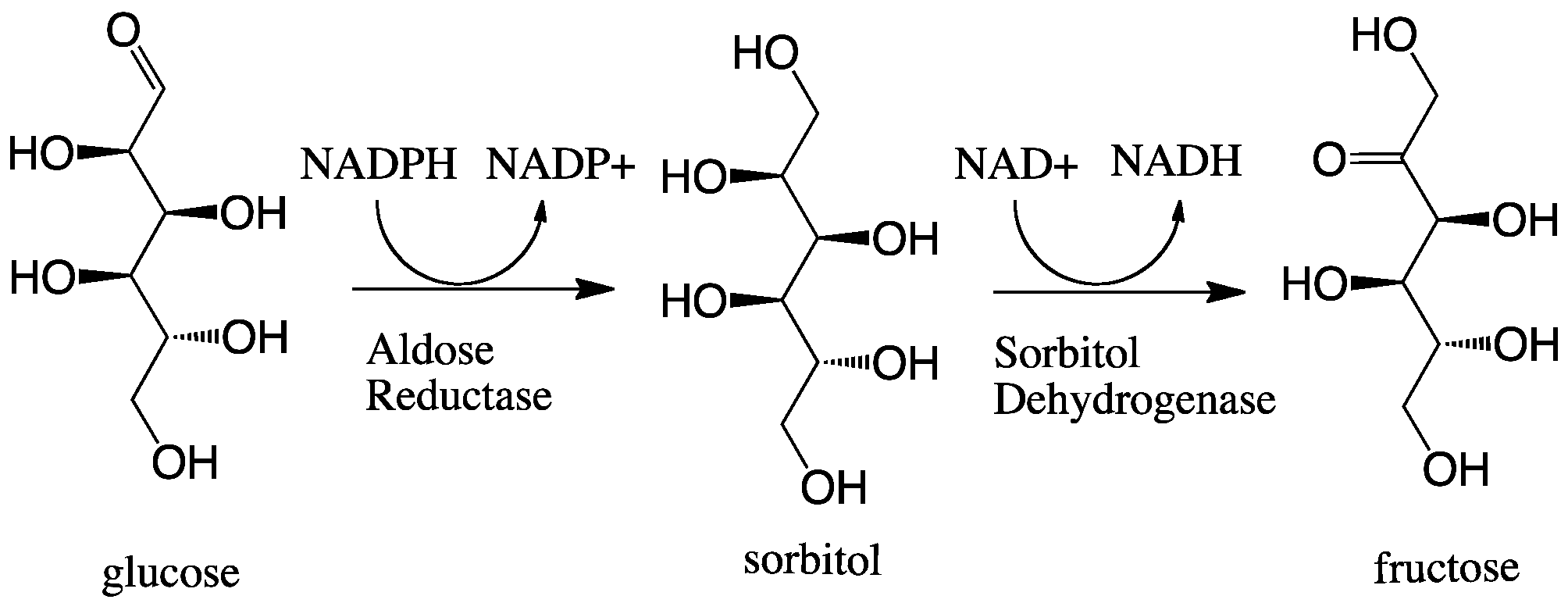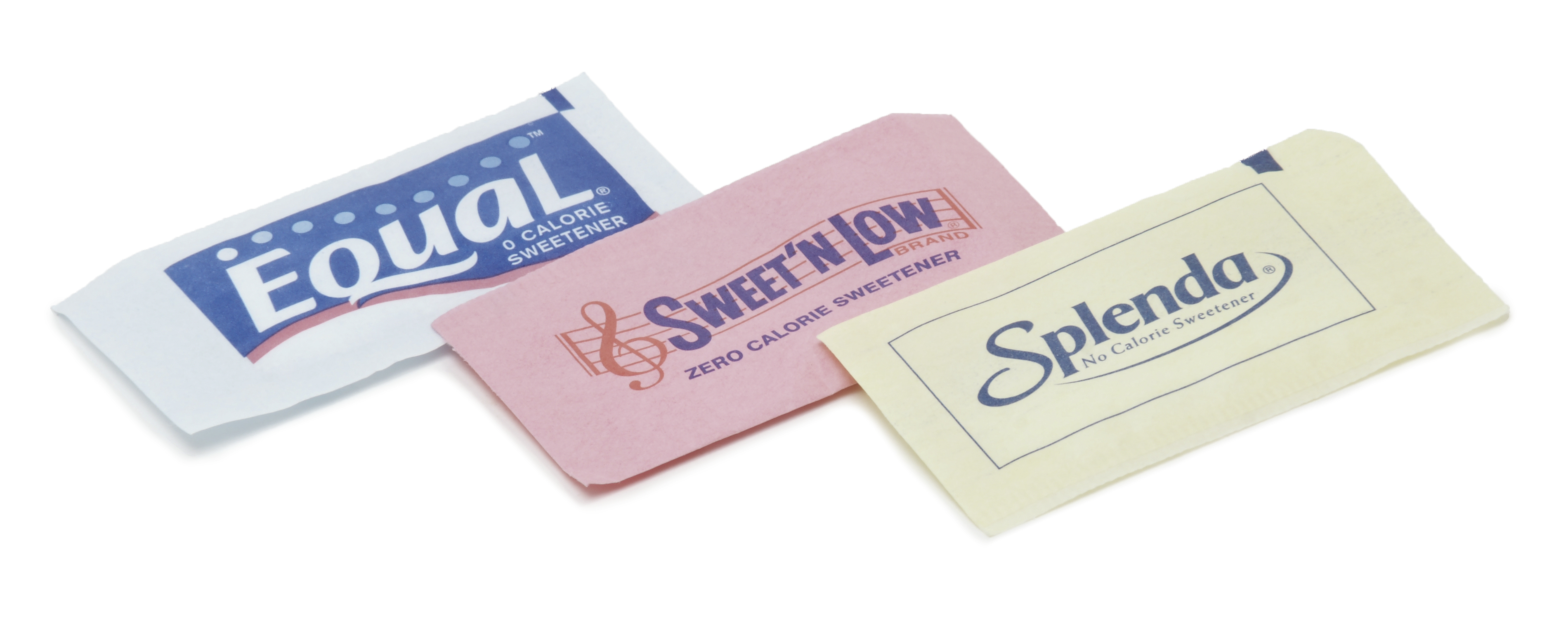|
Sorbitol
Sorbitol (), less commonly known as glucitol (), is a sugar alcohol with a sweet taste which the human body metabolizes slowly. It can be obtained by reduction of glucose, which changes the converted aldehyde group (−CHO) to a primary alcohol group (−CH2OH). Most sorbitol is made from potato starch, but it is also found in nature, for example in apples, pears, peaches, and prunes. It is converted to fructose by sorbitol-6-phosphate 2-dehydrogenase. Sorbitol is an isomer of mannitol, another sugar alcohol; the two differ only in the orientation of the hydroxyl group on carbon 2.Kearsley, M. W.; Deis, R. C. Sorbitol and Mannitol. In Sweeteners and Sugar Alternatives in Food Technology; Ames: Oxford, 2006; pp 249-249-261. While similar, the two sugar alcohols have very different sources in nature, melting points, and uses. As an over-the-counter drug, sorbitol is used as a laxative to treat constipation. Synthesis Sorbitol may be synthesised via a glucose reduction r ... [...More Info...] [...Related Items...] OR: [Wikipedia] [Google] [Baidu] |
Aldose Reductase
In enzymology, aldose reductase (or aldehyde reductase) () is a cytosolic NADPH-dependent oxidoreductase that catalyzes the reduction of a variety of aldehydes and carbonyls, including monosaccharides. It is primarily known for catalyzing the reduction of glucose to sorbitol, the first step in polyol pathway of glucose metabolism. Reactions Aldose reductase catalyzes the NADPH-dependent conversion of glucose to sorbitol, the first step in polyol pathway of glucose metabolism. The second and last step in the pathway is catalyzed by sorbitol dehydrogenase, which catalyzes the NAD-linked oxidation of sorbitol to fructose. Thus, the polyol pathway results in conversion of glucose to fructose with stoichiometric utilization of NADPH and production of NADH. ; glucose + NADPH + H+ \rightleftharpoons sorbitol + NADP+ Galactose is also a substrate for the polyol pathway, but the corresponding keto sugar is not produced because sorbitol dehydrogenase is incapable of oxidizing galactito ... [...More Info...] [...Related Items...] OR: [Wikipedia] [Google] [Baidu] |
Sorbitol-6-phosphate 2-dehydrogenase
In enzymology, a sorbitol-6-phosphate dehydrogenase () is an enzyme that catalyzes the chemical reaction :D-sorbitol 6-phosphate + NAD+ \rightleftharpoons D-fructose 6-phosphate + NADH + H+ Thus, the two substrates of this enzyme are D-sorbitol 6-phosphate and NAD+, whereas its 3 products are D-fructose 6-phosphate, NADH, and H+. This enzyme belongs to the family of oxidoreductases, specifically those acting on the CH-OH group of donor with NAD+ or NADP+ as acceptor. The systematic name of this enzyme class is D-sorbitol-6-phosphate:NAD+ 2-oxidoreductase. Other names in common use include ketosephosphate reductase, ketosephosphate reductase, D-sorbitol 6-phosphate dehydrogenase, D-sorbitol-6-phosphate dehydrogenase, sorbitol-6-P-dehydrogenase, and D-glucitol-6-phosphate dehydrogenase. This enzyme participates in fructose and mannose Mannose is a sugar monomer of the aldohexose series of carbohydrates. It is a C-2 epimer of glucose. Mannose is important in human metabolism ... [...More Info...] [...Related Items...] OR: [Wikipedia] [Google] [Baidu] |
Polyol Pathway
The polyol pathway is a two-step process that converts glucose to fructose. In this pathway glucose is reduced to sorbitol, which is subsequently oxidized to fructose. It is also called the sorbitol-aldose reductase pathway. The pathway is implicated in diabetic complications, especially in microvascular damage to the retina, kidney, and nerves. Sorbitol cannot cross cell membranes, and, when it accumulates, it produces osmotic stresses on cells by drawing water into the insulin-independent tissues. Pathway Cells use glucose for energy. This normally occurs by phosphorylation from the enzyme hexokinase. However, if large amounts of glucose are present (as in diabetes mellitus), hexokinase becomes saturated and the excess glucose enters the polyol pathway when aldose reductase reduces it to sorbitol. This reaction oxidizes NADPH to NADP+. Sorbitol dehydrogenase can then oxidize sorbitol to fructose, which produces NADH from NAD+. Hexokinase can return the molecule ... [...More Info...] [...Related Items...] OR: [Wikipedia] [Google] [Baidu] |
Sugar Alcohol
Sugar alcohols (also called polyhydric alcohols, polyalcohols, alditols or glycitols) are organic compounds, typically derived from sugars, containing one hydroxyl group (–OH) attached to each carbon atom. They are white, water-soluble solids that can occur naturally or be produced industrially by hydrogenation of sugars. Since they contain multiple –OH groups, they are classified as polyols. Sugar alcohols are used widely in the food industry as thickeners and sweeteners. In commercial foodstuffs, sugar alcohols are commonly used in place of table sugar (sucrose), often in combination with high-intensity artificial sweeteners, in order to offset their low sweetness. Xylitol and sorbitol are popular sugar alcohols in commercial foods. Chemical structure Sugar alcohols have the general formula HOCH2(CHOH)''n''CH2OH. In contrast, sugars have two fewer hydrogen atoms, for example HOCH2(CHOH)''n''CHO or HOCH2(CHOH)''n''−1C(O)CH2OH. The sugar alcohols differ in chain lengt ... [...More Info...] [...Related Items...] OR: [Wikipedia] [Google] [Baidu] |
Mannitol
Mannitol is a type of sugar alcohol used as a sweetener and medication. It is used as a low calorie sweetener as it is poorly absorbed by the intestines. As a medication, it is used to decrease pressure in the eyes, as in glaucoma, and to lower increased intracranial pressure. Medically, it is given by injection or inhalation. Effects typically begin within 15 minutes and last up to 8 hours. Common side effects from medical use include electrolyte problems and dehydration. Other serious side effects may include worsening heart failure and kidney problems. It is unclear if use is safe in pregnancy. Mannitol is in the osmotic diuretic family of medications and works by pulling fluid from the brain and eyes. The discovery of mannitol is attributed to Joseph Louis Proust in 1806. It is on the World Health Organization's List of Essential Medicines. It was originally made from the flowering ash and called manna due to its supposed resemblance to the Biblical food. Mann ... [...More Info...] [...Related Items...] OR: [Wikipedia] [Google] [Baidu] |
Sugar Substitute
A sugar substitute is a food additive that provides a sweetness like that of sugar while containing significantly less food energy than sugar-based sweeteners, making it a zero-calorie () or low-calorie sweetener. Artificial sweeteners may be derived through manufacturing of plant extracts or processed by chemical synthesis. Sugar substitute products are commercially available in various forms, such as small pills, powders, and packets. In North America, common sugar substitutes include aspartame, monk fruit extract, saccharin, sucralose, and stevia; cyclamate is also used outside the United States. These sweeteners are a fundamental ingredient in diet drinks to sweeten them without adding calories. Additionally, sugar alcohols such as erythritol, xylitol, and sorbitol are derived from sugars. Approved artificial sweeteners do not cause cancer. Reviews and dietetic professionals have concluded that moderate use of non-nutritive sweeteners as a safe replacement for sug ... [...More Info...] [...Related Items...] OR: [Wikipedia] [Google] [Baidu] |
Laxative
Laxatives, purgatives, or aperients are substances that loosen stools and increase bowel movements. They are used to treat and prevent constipation. Laxatives vary as to how they work and the side effects they may have. Certain stimulant, lubricant and saline laxatives are used to evacuate the colon for rectal and bowel examinations, and may be supplemented by enemas under certain circumstances. Sufficiently high doses of laxatives may cause diarrhea. Some laxatives combine more than one active ingredient. Laxatives may be administered orally or rectally. Types Bulk-forming agents Bulk-forming laxatives, also known as roughage, are substances, such as fiber in food and hydrophilic agents in over-the-counter drugs, that add bulk and water to stools so that they can pass more easily through the intestines (lower part of the digestive tract). Properties * Site of action: small and large intestines * Onset of action: 12–72 hours * Examples: dietary fiber, Metamuc ... [...More Info...] [...Related Items...] OR: [Wikipedia] [Google] [Baidu] |
Glucose
Glucose is a simple sugar with the molecular formula . Glucose is overall the most abundant monosaccharide, a subcategory of carbohydrates. Glucose is mainly made by plants and most algae during photosynthesis from water and carbon dioxide, using energy from sunlight, where it is used to make cellulose in cell walls, the most abundant carbohydrate in the world. In energy metabolism, glucose is the most important source of energy in all organisms. Glucose for metabolism is stored as a polymer, in plants mainly as starch and amylopectin, and in animals as glycogen. Glucose circulates in the blood of animals as blood sugar. The naturally occurring form of glucose is -glucose, while -glucose is produced synthetically in comparatively small amounts and is less biologically active. Glucose is a monosaccharide containing six carbon atoms and an aldehyde group, and is therefore an aldohexose. The glucose molecule can exist in an open-chain (acyclic) as well as ring (cyclic) form. ... [...More Info...] [...Related Items...] OR: [Wikipedia] [Google] [Baidu] |
INS Number
The International Numbering System for Food Additives (INS) is a European-based naming system for food additives, aimed at providing a short designation of what may be a lengthy actual name."Class Names and the International Numbering System for Food Additives"CAC/GL 36-1989 Adopted in 1989, Revision 2008. Last amendment 2011. Published by Codex Alimentarius It is defined by Codex Alimentarius, the international food standards organisation of the World Health Organization (WHO) and Food and Agriculture Organization (FAO) of the United Nations (UN). The information is published in the document ''Class Names and the International Numbering System for Food Additives'', first published in 1989, with revisions in 2008 and 2011. The INS is an open list, "subject to the inclusion of additional additives or removal of existing ones on an ongoing basis". Numbering system INS numbers consist of three or four digits, optionally followed by an alphabetical suffix to further characterize indiv ... [...More Info...] [...Related Items...] OR: [Wikipedia] [Google] [Baidu] |
Kilocalorie
The calorie is a unit of energy. For historical reasons, two main definitions of "calorie" are in wide use. The large calorie, food calorie, or kilogram calorie was originally defined as the amount of heat needed to raise the temperature of one kilogram of water by one degree Celsius (or one kelvin). The small calorie or gram calorie was defined as the amount of heat needed to cause the same increase in one gram of water. Thus, 1 large calorie is equal to 1000 small calories. In nutrition and food science, the term ''calorie'' and the symbol ''cal'' almost always refers to the large unit. It is generally used in publications and package labels to express the energy value of foods in per serving or per weight, recommended dietary caloric intake, metabolic rates, etc. Some authors recommend the spelling ''Calorie'' and the symbol ''Cal'' (both with a capital C) to avoid confusion; however, this convention is often ignored. In physics and chemistry the word ''calorie'' a ... [...More Info...] [...Related Items...] OR: [Wikipedia] [Google] [Baidu] |







